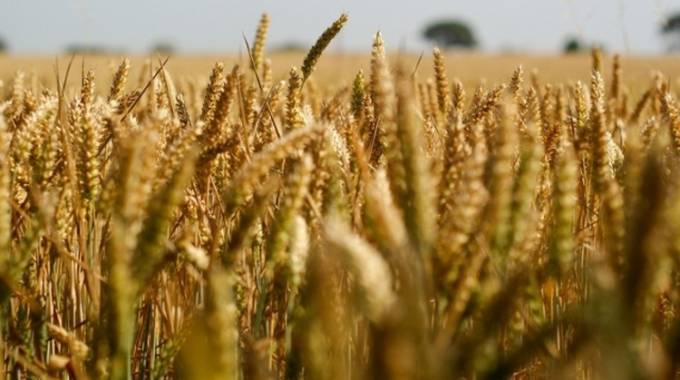
The Sunday Mail

Golden Sibanda
Senior Business Reporter
ZIMBABWE continues to carry the burden of a huge import bill for wheat flour, as few farmers are not keen to grow the crop on a commercial basis due to the high costs, unreliable power supplies, including lack of critical equipment, experts say.
The country’s import substitution programme is premised on making huge cost savings that will be funnelled to productive sectors of the economy.
Zimbabwe’s annual national wheat/flour requirement is estimated at 400 000 tonnes.
However, over the years, Zimbabwe has been producing less than a quarter of national demand, putting unbearable pressure on demand for forex required to import the cereal, especially given bread is almost staple food in the country.
Ironically, Zimbabwe has some of the best conditions in the world for achieving high yields of wheat.
Seed Co’s group wheat and small grains breeding programme lead Mr Tegwe Soko said in an interview last week that it was possible to grow high-quality varieties of flour wheat in Zimbabwe, but electricity and equipment were hindrances.
Mr Soko said contrary to market rumour that local wheat was not good for baking, the crop meets expended industry standards.
The practice of blending wheat for best quality baking flour, he said, is not peculiar to Zimbabwe as it was global industry best practice.
“To say that local wheat is not good for baking is incorrect; it depends on the recipe of the bread one may be trying to produce. Otherwise we have varieties that are excellent in terms of quality but are not being grown because they are low-yielding and they are not paying quality,” Mr Soko said.
“Our wheat is irrigated; for irradiation, you need Zesa (electricity) throughout the growing season. If you have load shedding at critical stages, it affects the growth of the wheat.
“How many combine harvesters do we have in the country? Lack of combine for harvesting purposes (is another challenge), because it (winter farming) is a window period. At maturity around October it starts to rain.
“The moment wheat gets affected by rain it starts germinating while still in the field; it becomes unfit for bread-baking. In the winter season of 2017, a lot of people lost their wheat in the field because of lack of combine harvesters,” he said.
Challenges around farm challenges around farm mechanisation, particularly irrigation infrastructure, he added, was one of the biggest constraints affecting the production of wheat in Zimbabwe.
“How many people have irrigation infrastructure?” he asked.
“In fact, it is a crop that has to be automated from plant to harvesting because every operation has to be done on time, otherwise if you try to harvest manually, you incur a lot of losses because it will rain while the wheat is still in the field,” he said.
Wheat farming is regarded as one of the most lucrative businesses in Zimbabwe.
Government has set producer prices for wheat producer the 2018-19 marketing season at $630 per tonne, up from $500.
Mr Soko said, “If you are a farmer, you have to be interested in the yield and Zimbabwean yields are some of the best in the world. In other African countries, they grow rain-fed wheat, meaning they get maximum yields of around 2,5 tonnes per hectare.
“And our wheat in Southern Africa is irrigated; minimum 10 tonnes you can get per hectare. So, in terms of yield per hectare, it (Zimbabwean wheat) is one of the best in the world.”
Mr Soko said most of the soft wheat varieties grown in Zimbabwe were good for baking, especially bread-making, although imported hard wheat varieties grown in colder climates are a notch higher in terms of quality standards.
“On the issue of quality, it depends from which perspective you are talking – baker or miller. Those guys have set standards in terms of protein content, flour content…, density and all other things.
“So when you have people who do not have information talking that is when you find people saying things generally. The technical document which GMB uses in terms of buying wheat looks at grain protein content (among others); and the minimum for premium wheat is 11 percent,” Mr Soko said.
“Our wheat exceeds 11 percent (grain protein content); there are varieties that exceed the 11 percent. Every commercial variety that is on the market meets expected minimum requirements for the agro-industry in Zimbabwe,” he added.
Grain Millers Association of Zimbabwe (GMAZ) president Tafadzwa Musarara said they blend local wheat with the imported product for baking flour at a ratio of 70 percent to 30 percent.
He said that there was ever-growing demand for wheat products in urban areas as the younger population shifts their consumption patterns from traditional meals such as sadza.
“What is an issue is the genetic background about wheat.
‘‘There are different types of wheat. There is what is referred to as hard wheat, they are low-yielding but excellent in terms of quality. Most of these are winter wheat grown in cold climates. Then there are what are called soft wheat; those are high yielding but in terms of quality they are not the best; they may be below 10 percent in terms of grain protein content.
“However, in terms of varieties that we are putting on to the market now, its something that is between soft wheat and hard wheat; we have decided to further improve the quality from below 10 to above 11 in terms of grain protein content.
“As such, as a farmer you have to choose between growing for quality of growing for yield. Notably, the industry is not paying for quality meaning a farmer growing high quality wheat is losing out in terms of yield because there is a correlation,” he said.
Increasing wheat production is expected to create additional jobs in the sector.
Wheat presently contributes between 4 percent to 5 percent (a significant chunk) to the overall agriculture sub-sector.
The contribution is expected to triple once production improves.



